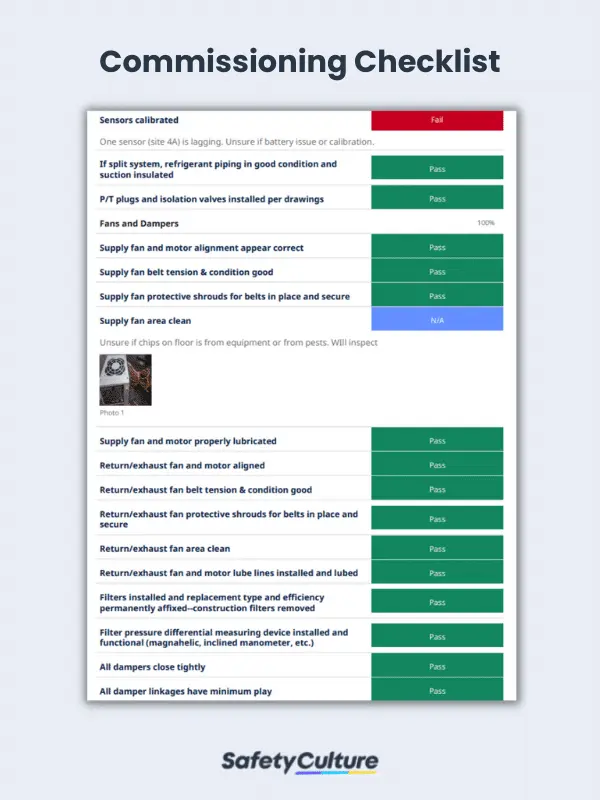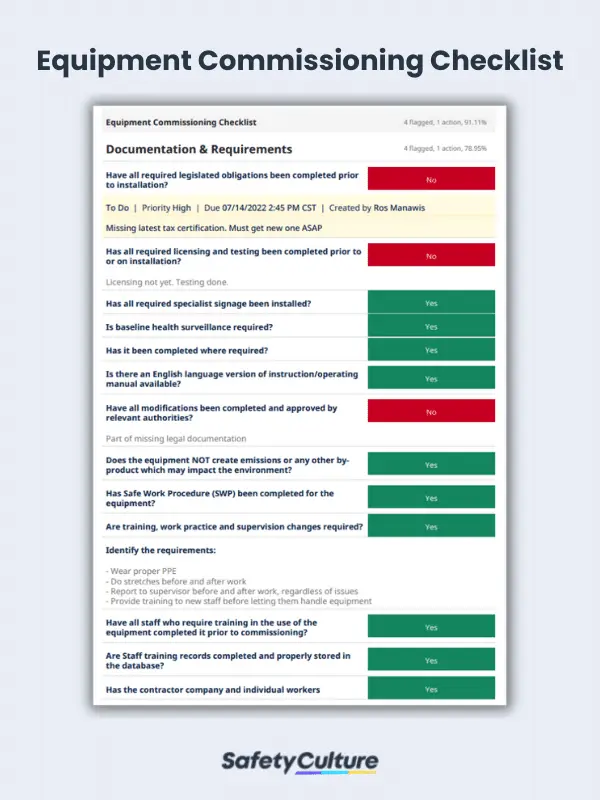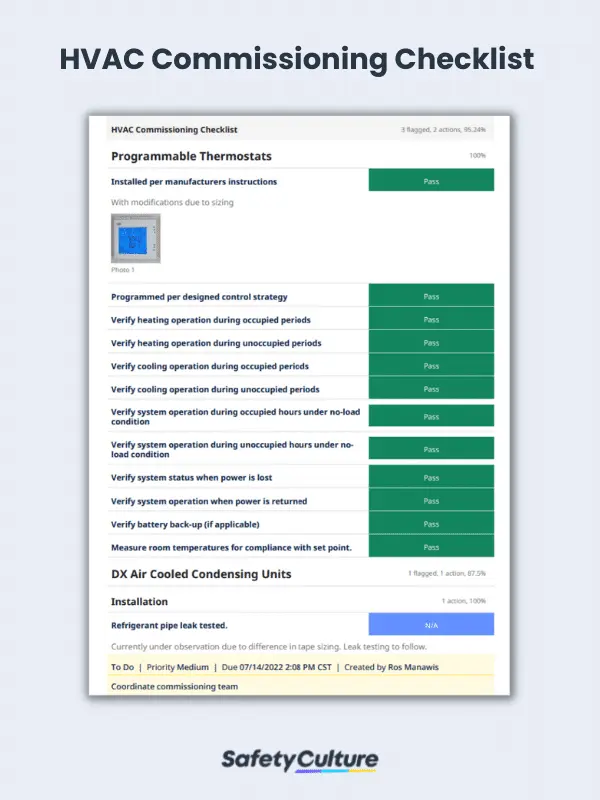What is a Commissioning Plan?
A commissioning plan is a guide used by commissioning teams and project managers to establish the scope and responsibilities to be carried out in order to ensure and verify that an item or operation is working well. Often, a commissioning plan is made up of multiple documents.
Importance and Uses
In the general commissioning process, a commissioning plan serves as the basis or foundation for all tasks and schedules. Not only does the commissioning plan have the list of responsibilities of those involved in a project, but it also contains the tasks to be done, schedules to be followed, goals to be achieved, and target dates.
A commissioning plan also details safety and health requirements to be followed for the whole commissioning process. Additionally, a commissioning plan also contains the quality standards to be followed by everyone involved for every process, ensuring everyone is aligned when it comes to quality and safety protocols. Having a commissioning plan also makes it easy to hand over projects should there be a change in leadership, as the plan would have all the necessary information for carrying out the project.
Although some processes and needs may change along the way, having a commissioning plan as early as possible is important to any project. Even though it can change throughout the project process, creating a commissioning plan first can help visualize the steps to take, the roadblocks that can be encountered, and the expected costs to prepare for at the onset of the project. These can be changed later depending on the situation.
Elements of a Commissioning Plan
There is no strict way to create a commissioning plan. Each can be modified depending on the industry, product to be evaluated, and the need for the commissioning, as well as on the conditions under which a project is expected to be carried out. For example, there can be a specific commissioning plan for Heating, Ventilation, and Air Conditioning (HVAC) commissioning, building commissioning, and electrical or energy commissioning.
However, generally, a commissioning plan should have the following:
- Description, goals, and scope of the project as agreed upon by all parties
- Responsibilities of those involved in the project
- List of materials needed and where to get them
- Checklists used and to be used in the project
- Diagrams of products and sites to be evaluated or modified
- Installation processes and schedules to be followed
For all the elements of the commissioning plan, checklists are essential. There are pre-commissioning checklists that are made before and during the commissioning plan creation stage, and there are checklists that are also created during the commissioning process itself. These checklists ensure that all processes agreed upon are followed, as well as all equipment needed is obtained and maintained discussed. Using checklists in commissioning plans and in the project itself can also ensure all safety and quality standards are being followed.
Said commissioning plan checklists also have no certain rules for their creation. Similar to commissioning plans, there are different ways to create and maintain checklists depending on the nature of the project. Using a digital checklist tool for commissioning plan checklists will also be more beneficial as digital checklists are:
- easier to share and use on the go;
- faster to set up and organize;
- more efficient to compile; and
- more flexible.
SafetyCulture (formerly iAuditor) for Commissioning
Consider using SafetyCulture for creating and maintaining your commissioning plan. SafetyCulture is a digital inspection and checklist tool that can be used for all your commissioning needs. With SafetyCulture, you can convert your existing commissioning plan templates from Excel for use in the app, use a commissioning template from the Public Library and modify it as needed, or create a new one from scratch. After, you can share your checklists with those you authorize, such as your team members, your commissioning team, and your superiors.
All SafetyCulture checklists are also uploaded to the cloud where they can be accessed anytime and anywhere, allowing for quick inspections and audits on the go. Changes in any checklists are also reflected in real-time, including offline work—which immediately syncs back to the cloud once the internet connection is restored.
Other things SafetyCulture allows you to do are:
- Use QR codes for faster inspections
- Schedule inspections to check up on the commissioning process or to ensure that the commissioning plan is being followed
- Report problems in the commissioning plan by raising Issues, assigning Actions to specific people to address them, and providing a Heads Up to the team
- View data reported in checklists at a glance using the analytics tool
- Integrate with different work and project management apps such as Microsoft Excel, Power BI, Tableau, and more







